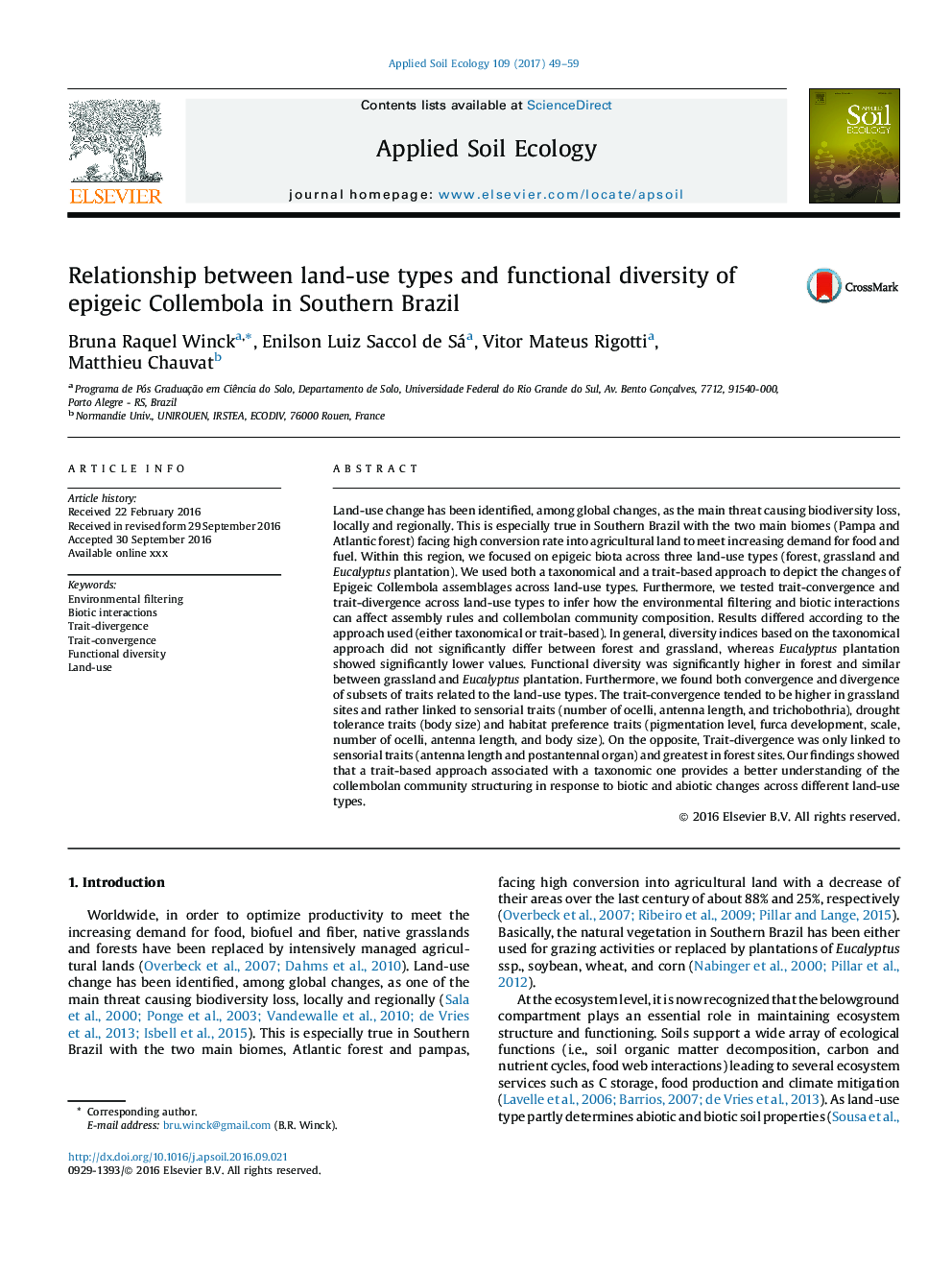| کد مقاله | کد نشریه | سال انتشار | مقاله انگلیسی | نسخه تمام متن |
|---|---|---|---|---|
| 4381769 | 1617774 | 2017 | 11 صفحه PDF | دانلود رایگان |
• Taxonomical and functional approach showed different patterns in communities.
• Both trait-convergence and trait-divergence were found across land-use types.
• Trait-convergence was related to drought tolerance and habitat preference.
• Trait-divergence was related to sensorial ability of collembolan community.
Land-use change has been identified, among global changes, as the main threat causing biodiversity loss, locally and regionally. This is especially true in Southern Brazil with the two main biomes (Pampa and Atlantic forest) facing high conversion rate into agricultural land to meet increasing demand for food and fuel. Within this region, we focused on epigeic biota across three land-use types (forest, grassland and Eucalyptus plantation). We used both a taxonomical and a trait-based approach to depict the changes of Epigeic Collembola assemblages across land-use types. Furthermore, we tested trait-convergence and trait-divergence across land-use types to infer how the environmental filtering and biotic interactions can affect assembly rules and collembolan community composition. Results differed according to the approach used (either taxonomical or trait-based). In general, diversity indices based on the taxonomical approach did not significantly differ between forest and grassland, whereas Eucalyptus plantation showed significantly lower values. Functional diversity was significantly higher in forest and similar between grassland and Eucalyptus plantation. Furthermore, we found both convergence and divergence of subsets of traits related to the land-use types. The trait-convergence tended to be higher in grassland sites and rather linked to sensorial traits (number of ocelli, antenna length, and trichobothria), drought tolerance traits (body size) and habitat preference traits (pigmentation level, furca development, scale, number of ocelli, antenna length, and body size). On the opposite, Trait-divergence was only linked to sensorial traits (antenna length and postantennal organ) and greatest in forest sites. Our findings showed that a trait-based approach associated with a taxonomic one provides a better understanding of the collembolan community structuring in response to biotic and abiotic changes across different land-use types.
Journal: Applied Soil Ecology - Volume 109, January 2017, Pages 49–59
